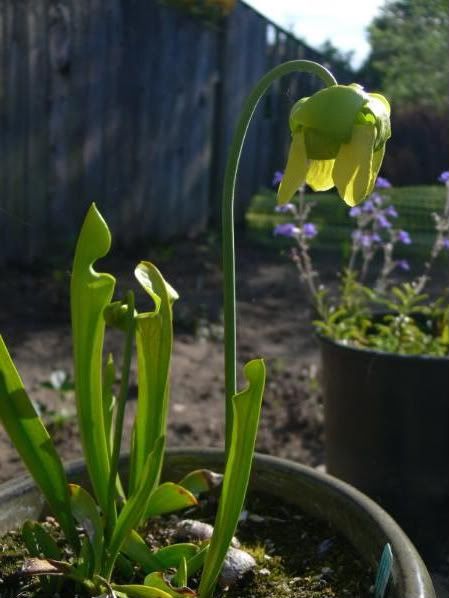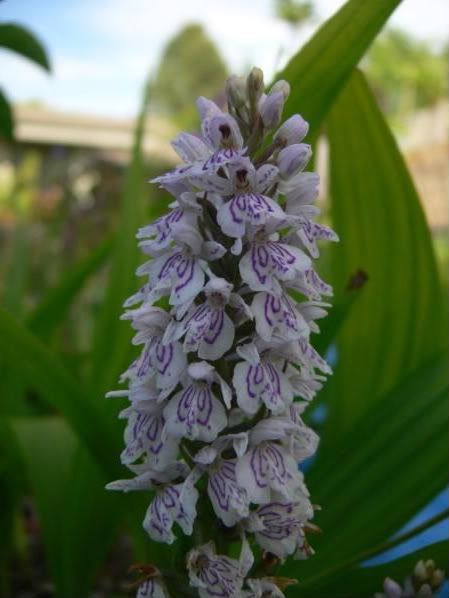Our annual trip to SW OR was very nice, but, as always, too much driving, not enough looking. Below are 3 days worth of day trips.
The meadows and fields have a rich diversity of plant life in southern Oregon. The moist mild winters and hot dry summers help to create great abundance. Strangely, there is very very little macroscopic life there: You rarely see any evidence of deer or even rabbits and even birds are scarce! It's just us, the sound of wind through pines and the flowers :-)
Calochortus tolmei.

Phlox speciosa.

Eriophyllum lanatum.

Castilleja


The biggest Allium falcifolium I've ever seen. Maybe a different species?

Silene hookeri

Iris bracteata

Rhododendron occidentale comes in many forms. Here are two.
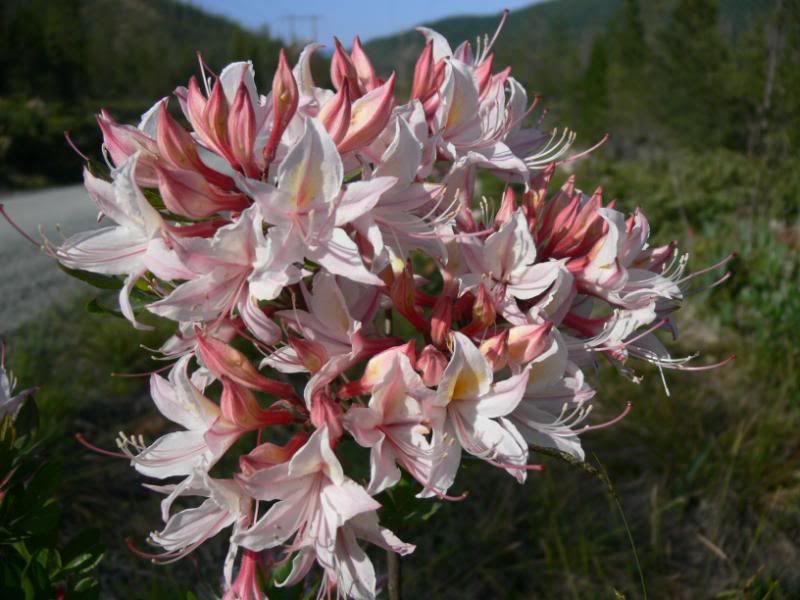
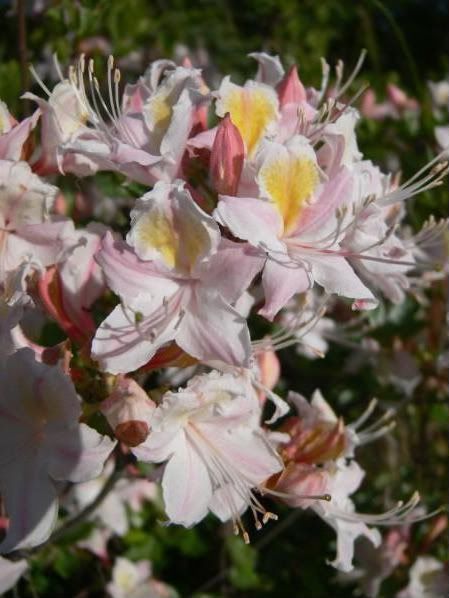
Here's an overall of a field with sparse pines.

The next major ecosystem revolves around bogs and creeks. Here's a nice creek. There are a lot of them running down from the Siskiyous. The water is cold, except maybe in September.

You almost never see pines growing in running water on the west coast... except for these ones.

A log across a bog... without a frog, sadly.

Cypripedium californicum. Southern Oregon travel is a total bitch. One population of Cyp cal is here, the next nearest is a half hour drive, the next nearest large population could be only 30 miles as a crow flies, which could take 4 hours to get to...(speaking from very real experience!) The roads are very often gravel and are often BAD gravel or dirt, making you clench your teeth with every pothole that almost bottoms you out. So much dust. So much bouncing. This is why I don't have any new Cyp cal facts/populations to add to my photo list: I'm too chicken to take the 7 hour/80mi drive to find them ;-)


A wet seep filled with tiny tiny Mimulus. I can't figure out what species these are! M. guttatus gets to be like 18in tall, but these only get 4in tall... But, there's a lack of good info on the genus... in my mind. I'm calling them M. guttatus anyway. Maybe M. guttatus ssp kouzesii is appropriate ;-)

Moving briefly to the forests. They are usually sparse and are predominated by Pine, Incense Cedar and Doug fir, depending on altitude and water table.
Phlox adsurgens.

A sign eating tree. Nom Nom Nom.

Cypripedium montanum. Always manages to grow where there is moss on the ground in an otherwise dry pine forest. Within peeing distance, there are also Piperia and Goodyera oblongifolia (late bloomers, of course,. Just like you. It's ok, we understand.).

Cypripedium montanum forma praetertinctum. After three years of visits, this plant seems stable at green.

Boschniakia strobilacea. Ground cone. One of those very odd parasitic plants! Interesting but they gross me out: I can't touch them, Bleh.

And last, since I've recently been designing (on paper...) a rock garden for the new front yard, I've realized the amazing variety right in front of me. It's the, "if you give it a name, you'll see it," type of thing.
Dicentra formosa ssp oregana. Quite rare, with beautiful blue leaves.


A very colourous Sedum?

Natural rock garden, going up... really neat vertical rocks with plants (mostly that Sedum from above and Lewisia leeana) growing in between. They looked like coral.
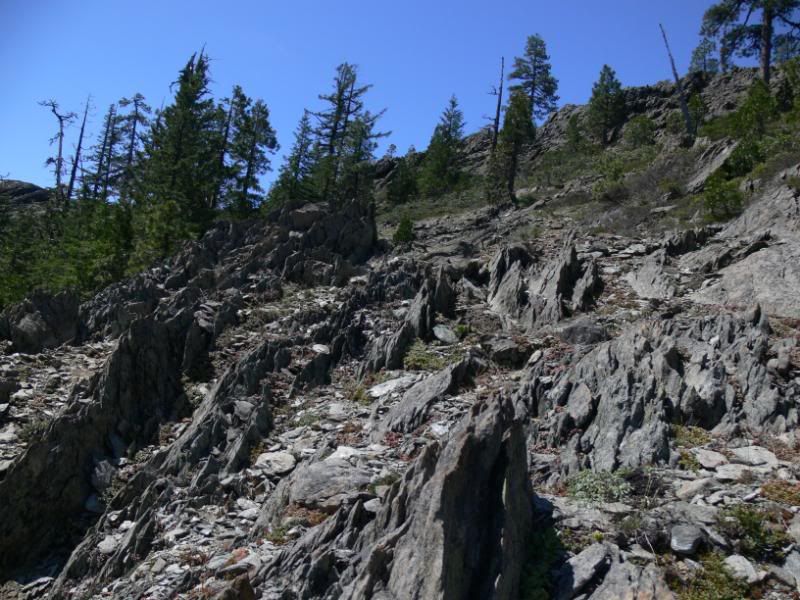
The view from the top, going down... Yes, that's my car waaaaay down there. It was well worth it. I also saw some Fritilliaria glauca up near the top, but it was past blooming. Also, a lone Iris at the top, as well as several Violets that I never see otherwise.
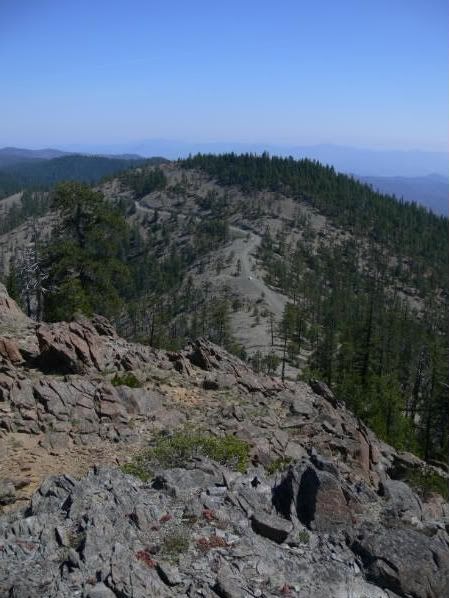
A massive Lewisia leeana! It must have been 6inches in diameter!


Last, my favorite new find: Lewisia cotyledon. We only saw this one plant stuck to a rock. We tried driving up to higher altitude to see a lot of them but got tired of driving after many hours...


